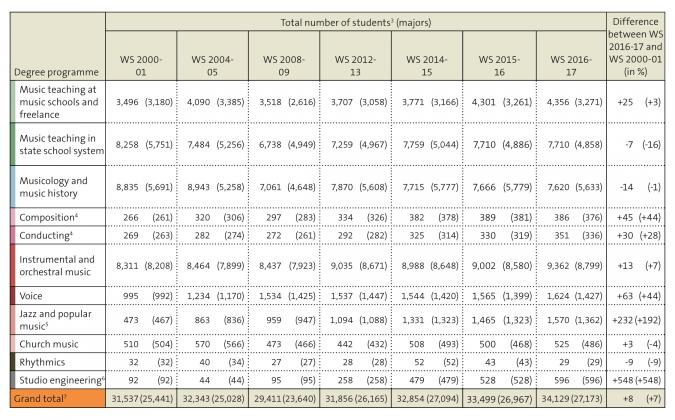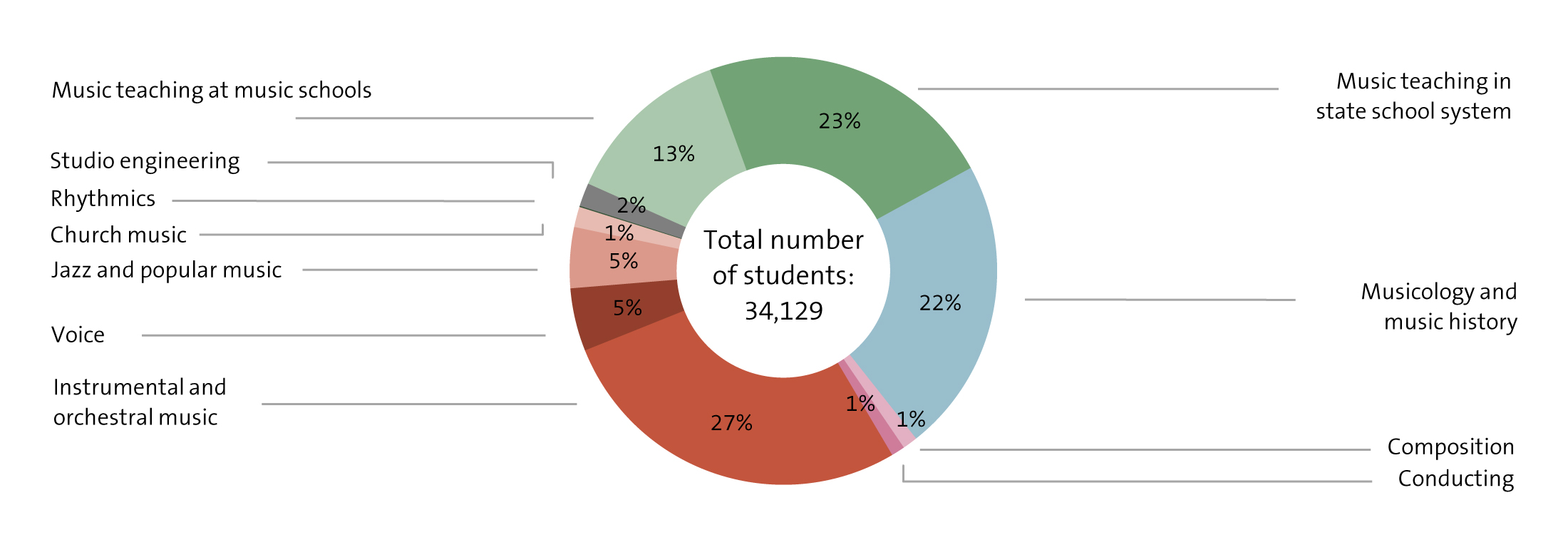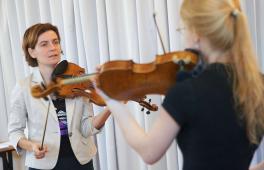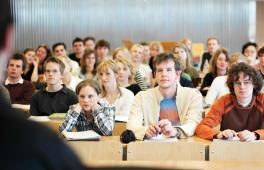According to the Federal Statistical Office, there were a total of 34,129 enrolments in music/musicology in the winter semester 2016/17 (major and minor subjects), an increase of 630 compared to the previous year (+2 %).
The number of students enrolled in instrumental and orchestral music was 9,362, which means that this subject remains the most popular among the music degree programmes. Music teaching in state school system (7,710) and musicology / music history (7,620) were the second most popular fields of study. Other music education subjects - music teaching at music schools and freelance - were studied by around 4,350 people.

Jazz and popular music, among others, have increased since 2000/01: With almost 1,570 enrolments, today this degree programme has almost as many students as voice. Composition was studied by 368, conducting by 351 and church music by 525 people.
The increase in the number of courses for studio engineers went hand in hand with an increase in the number of students in this subject area. The statistics recently reported almost 600 students in this subject, an all-time high.

Note
The figures are based on administrative data on first-time enrolment and returnees, obtained and submitted to the state statistical offices by the schools concerned and from thence to the Federal Statistical Office. The table includes the total number of students, i.e. those with music as a major subject (figures in parentheses) and those with music as a minor. This has an especially noticeable impact on degree programmes for music teaching in the state school system, music teaching at music schools and freelance, and musicology and music history. All figures refer to the winter semester (WS) and include all students enrolled in music programmes, i.e. excluding those on leave, preparatory students and auditors. When interpreting the data, it should be borne in mind that the state statistical offices sometimes use conflicting classification systems for school subjects, which can lead to anomalies in the series of figures. Similarly, the inclusion of music as a major and minor subject may cause students to be counted more than once. As a result, the figures at best represent orders of magnitude.
Footnotes
-
Incl. students at the tertiary-level schools of church music in Aachen (WS 2001-02 to WS 2006-07), Görlitz (up to WS 2007-08) and Regensburg (from WS 2002-03) as well as Bayreuth, Dresden, Halle, Herford and, from WS 2016-17, the Barenboim-Said Academy in Berlin.
-
Incl. Gesamthochschulen (‘comprehensive universities’. i.e. university cum technical university) up to WS 2001-02.
-
Excl. students in departments of performing arts, film, television and theatre studies (incl. set design, stage direction etc.).
-
Degree programmes in composition and conducting are more likely than other degree programmes to be attended as postgraduate coursework.
-
Incl. course offerings in studio engineering at the Musikhochschulen in Berlin (UdK) and Detmold, as well as the bachelor’s programme in music production and audio design at Berlin hdpk (University of Popular Arts, from WS 2010-11), the bachelor‘s programme in ‘Sound and Music Production’ at Darmstadt Hochschule (from WS 2013-14), and the master’s programme in ‘Sound’ at Dortmund University of Applied Sciences and Arts (from WS 2016-17). It should also be noted that, from WS 2002-03 to WS 2004-05, students in ‚Musikübertragung’ (sound transmission, i.e. studio engineering) at Detmold Musikhochschule were mistakenly categorised under ‘Music Education’. The number of students enrolled in this subject in Detmold during this period amounted to roughly 30 to 40 per semester, a figure that should also be taken into account when interpreting the data.
-
Plus students at several music academies, conservatories, private colleges, polytechnics and tertiary-level schools of church music, which are not covered by the Federal Statistical Office at all (the most recent figures amounted to approx. 1,300 students in eleven such institutions in WS 2013-14). Also not included are those students whose degree programmes for music professions are not classified as belonging to the field of music/musicology according to federal classification guidelines.
Source information
Compiled and calculated by the German Music Information Centre from figures supplied by the Federal Statistical Office.





